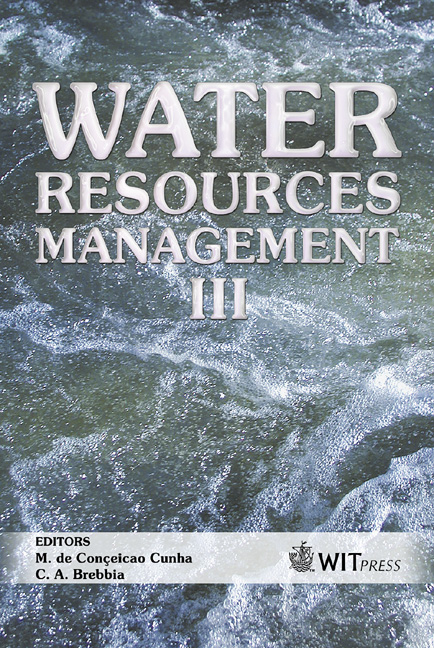Biomolecular Strategy To Decrease Chromate Toxicity To Remediating Bacteria
Price
Free (open access)
Transaction
Volume
80
Pages
9
Published
2005
Size
638 kb
Paper DOI
10.2495/WRM050271
Copyright
WIT Press
Author(s)
D. F. Ackerley , C. F. Gonzalez , M. Keyhan , R. Blake III & A. Matin
Abstract
Cr(VI) (chromate) is a widespread environmental pollutant, and a constant threat to drinking water supplies. It is soluble, toxic and carcinogenic. Bacteria can remediate it by reducing it to insoluble Cr(III). Chromate, however, is toxic also to the remediating bacteria, hampering their effectiveness; this and other problems can be addressed through bio-molecular engineering. ChrR, a soluble chromate-reducing flavoenzyme of Pseudomonas putida, is a promising target for engineering studies. Gene knockout and enzyme overproduction studies show that ChrR protects against chromate toxicity. Stopped flow spectrophotometry indicates that ChrR-catalyzed reduction of Cr(VI) to Cr(III) passes via a highly reactive Cr(V) intermediate; and consistent with this, reduction of chromate by ChrR in vitro generates reactive oxygen species (ROS). However, ChrR generated lower levels of ROS than another soluble flavoenzyme, lipoyl dehydrogenase; this and many other cellular enzymes are single electron chromate reducers, and are a major cause of chromate toxicity to bacteria. We propose that ChrR may minimize this toxicity by diverting chromate away from the one-electron reducers; and that by enhancing this activity it might be possible to generate a strain that not only transforms chromate at a greater rate, but is also more resistant to chromate’s toxic effects. Keywords: hexavalent chromium, bioremediation, reactive oxygen species, bioengineering. 1 Introduction Chromium(III), the most common form of chromium found in natural environments, is an important material resource and essential micronutrient.
Keywords
hexavalent chromium, bioremediation, reactive oxygen species, bioengineering.





